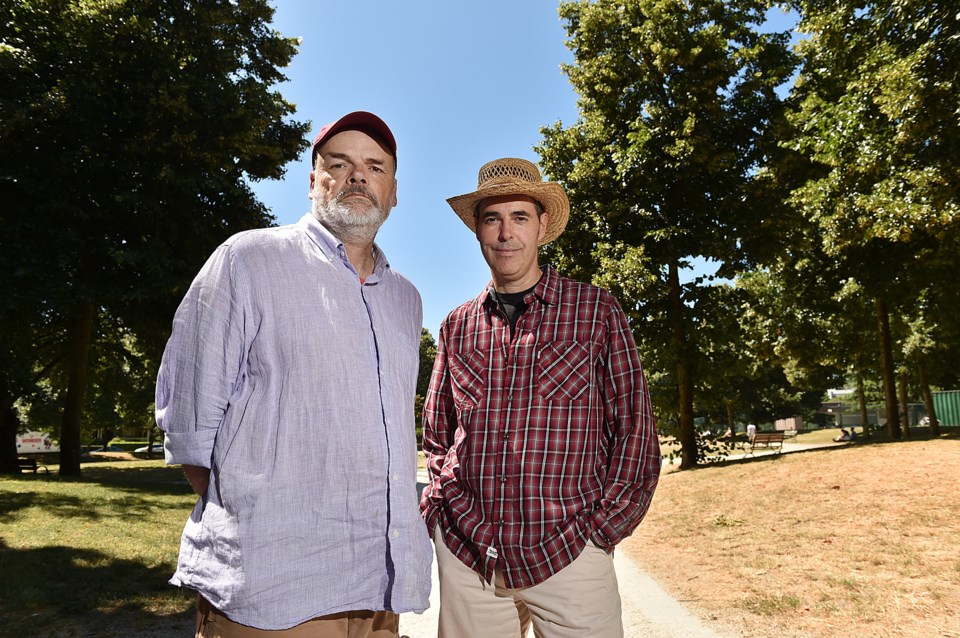Countless scribes, journalists and biographers have documented country music queen Loretta Lynn’s chords and undeniable cachet over the decades.
Rob Howatson has instead chosen to devote his research to a chicken coop.
According to Howatson and fellow researcher Mike Harling, Lynn got her first big break in the music business in Vancouver, along a stretch of road near East Kent Avenue and Elliot Street.
The setting?
A chicken coop.
“I grew up in South Vancouver and when I was a kid I didn’t think it was an interesting place and I didn’t think we had many celebrity stories,” Howatson said. “This one kind of blew my mind and it opened the door to all kinds of other stories that I’ve since uncovered.”
Howatson, who wrote a 2012 feature story on the subject for the Courier, will unravel his years of research into Lynn’s backstory as part of a Museum of Vancouver event called Unbelievable Stories, Aug. 17. He’ll be joined by Harling and local historian John Atkin, who’ll speak to the development origins of the West End.
Howatson’s yarn began in 2010 while walking through a back lane in Fraserview. A couple of “old timers” stopped him, pointed to a nondescript property and told him it once contained a chicken coop later converted to a live music and gathering place.
It was there, he was told, that Lynn performed in 1959. The now-85-year-old country star lived in northern Washington State at the time and it’s believed she had heard about the coop on the radio. She came up north to give it a go at a Sunday afternoon hootenanny and was discovered by Canadian music producer and label owner Don Grashey.
As Lynn went on to achieve mega superstardom, seldom did she reference the coop or that 1959 jam session.
Oftentimes, she left Grashey’s name out of the story altogether, or referenced Grashey’s business partner, Norm Burley, as her ticket to fame.
Between Howatson and Harling, the pair have interviewed Lynn, Grashey and other players in the story in an attempt to get to the truth. Instead of black and white, they continually find varying shades of grey.
“When I confront [Lynn] with what Don Grashey claims, she never contradicts that — she says, ‘Well if that’s what he remembers, then he’s probably right.’ It’s a very frustrating story to share,” Howatson said. “But I’m not a wealthy superstar like she is, so I’ve often wondered if she’s had some legal advice given to her around how she doles out credit and to whom. This is a theory I have but I’ve not been able to prove it.”
Disproving theories is the business Atkin will tend to when his portion of the talk and museum tour takes shape. A civic historian who’s combed through decades of bylaws, newspaper articles, photos and other reference material, Atkin provides a timeline from the West End’s transformation from rooming houses to homes in the sky.
“I actually read [zoning bylaws] — it’s weird and fun,” Atkin said. “But I’m also curious about the built form in terms of why things look the way they do.”
Atkin’s research suggest the period between 1927 and 1929 as being the critical moment in the area’s transformation: single-family houses were out, while apartments and up to six-storey walk-ups were in.
The three municipalities that became Vancouver as we know it today — South Vancouver, Vancouver and Point Grey — amalgamated in 1929 and many of those zoning bylaws were kept. Interestingly enough, city hall was built at 12th and Cambie because it served as the geographic centre point of those three former boroughs.
“Some people demolished their homes out of spite,” Atkin said. “You’ll see early photographs from the ’30s and into the early ’40s of new emerging apartment buildings and these ratty old rooming houses. We forget that the West End went through that phase of dilapidation.”
Atkin’s research points to the 1960s, when highrises with ever-valuable balcony space became the new norm, as another turning point. The period from 1964 forward is when the area took on the character that’s largely seen today.
“This tour is about explaining stuff that makes people go, ‘really? I didn’t know that,'” Atkin said.
The two presentations are slated for Aug. 17 at 7 p.m. Tickets range in price between $15 and $17, while museum members get in free. For info, see museumofvancouver.ca.


